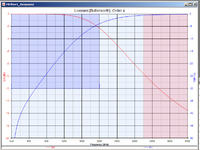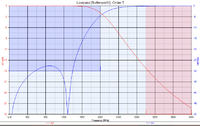Palpurul
Member level 3
Greetings,
I was trying to design a 2GHz microstrip filter. It's has 4th order butterworth response. For this filter I require a stub that has 0.036 mm thickness. This is very impractical for the PCB house (I am going for a cheap PCB manufacturer). Is there any other structure that can maintain very high characteristic impedance while being practical. For example, as far as I know radial stubs are used for very low characteristic impedances while being relatively small compared to regular stubs. Is there any shape or trick for high impedance transmission line?
I was trying to design a 2GHz microstrip filter. It's has 4th order butterworth response. For this filter I require a stub that has 0.036 mm thickness. This is very impractical for the PCB house (I am going for a cheap PCB manufacturer). Is there any other structure that can maintain very high characteristic impedance while being practical. For example, as far as I know radial stubs are used for very low characteristic impedances while being relatively small compared to regular stubs. Is there any shape or trick for high impedance transmission line?






